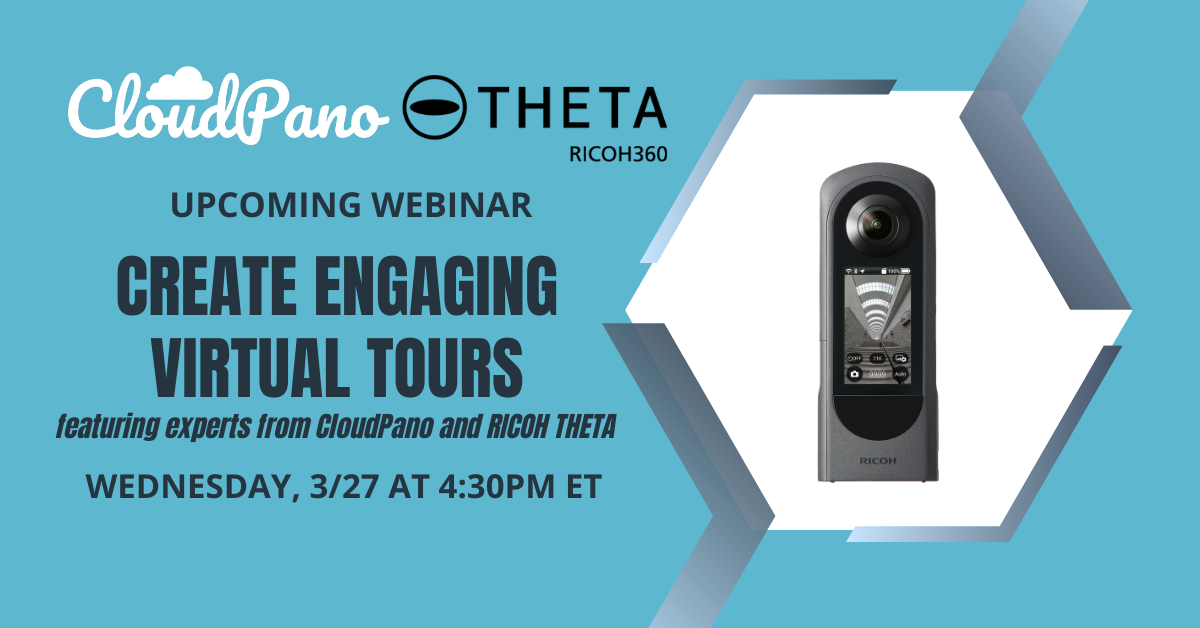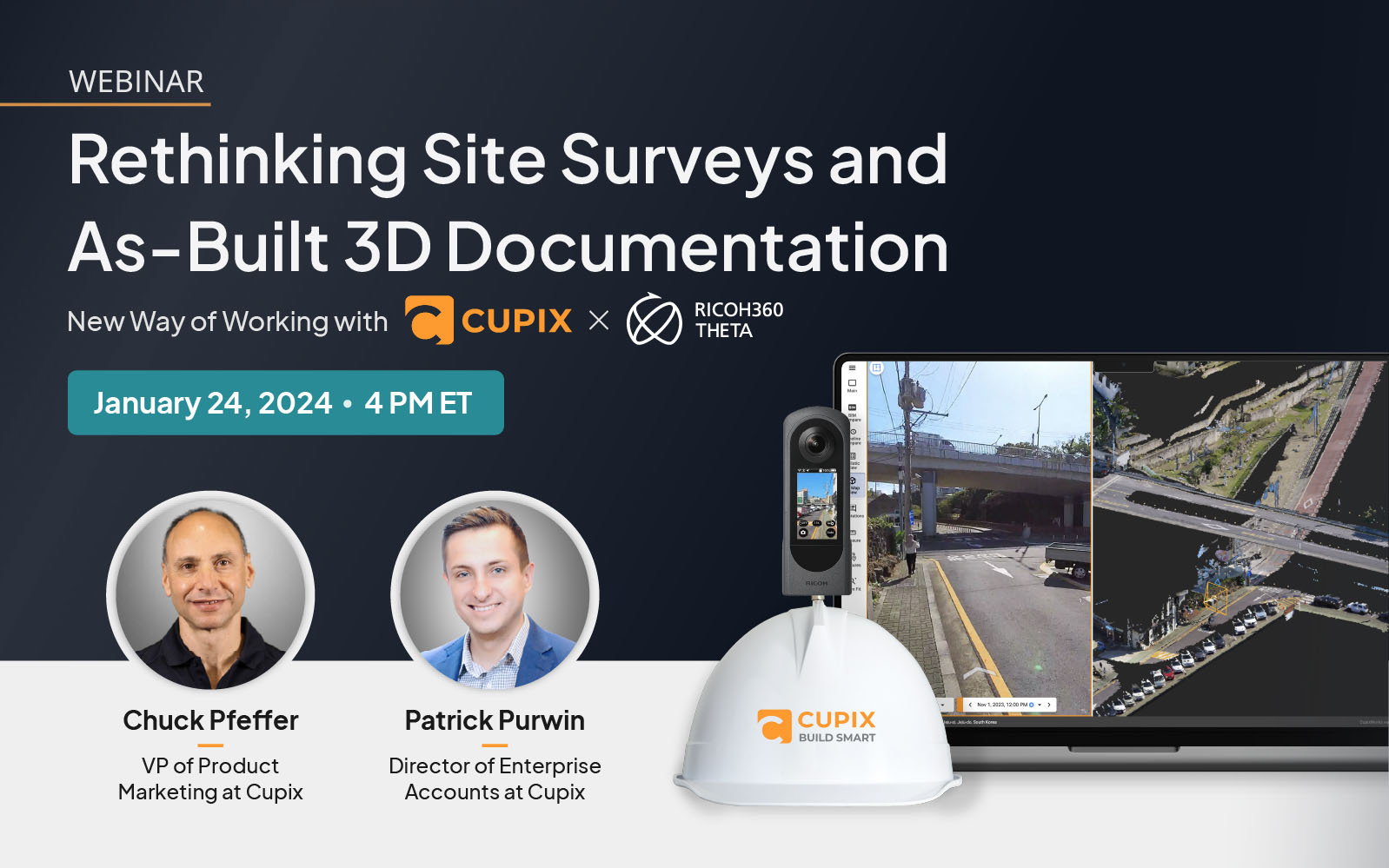Our team had the opportunity to speak with Sam Knepprath, Social Media and Content Manager for the Indianapolis Art Center located in Indianapolis, Indiana on how their team has utilized our 360 degree camera, RICOH THETA and virtual tour software, Matterport throughout the pandemic.
Background
Thanks for speaking with us, Sam! In what areas of your business do you use 360-degree photography?
We currently use 360-degree photography when capturing exhibitions and creating virtual tours to be hosted on Indianapolis Art Center’s Online Gallery Space. The Art Center features rotating, year-round exhibition programming that showcases artists, both on a regional and national scale, so the need to photograph exhibitions happens every two-three months. We currently use the RICOH THETA V* for capturing the images and then pair the images with Matterport to create virtual exhibition and studio spaces. As our summer semester comes to an end, we are looking into how we can further capture our studio spaces so that potential and returning students can better explore the high-quality studio spaces and equipment provided, even before registering for any of our offered classes.
*Their team currently uses the THETA V model which is no longer available; however, the THETA SC2 for Business would be an ideal choice for professionals shooting interior 360-degree photography or virtual tours. This model is excellent for a variety of professions such as real estate, interior design, architecture, retail, and more. You can find the image comparison of current models here.
That sounds great! How did you initially get started with 360-degree photography?
The global pandemic left the Art Center struggling to find ways to connect with our community and we knew providing an at-home experience for our exhibitions was a necessity. Though we had initial successes through daily featured artists across our social media channels, as well the ability for our community to purchase artwork featured on our Art Center Marketplace, it became apparent that to create a truly engaging and spatial experience we would need to take our programming to the next level. This is where the idea of utilizing 360 cameras came to be.
The past year has caused an influx in virtual touring and events. What made you choose THETA to capture your exhibits?
The hunt for the perfect camera came about through the extensive search for the perfect virtual tour program. We asked around to local galleries and art organizations and it became clear that many of them were already using 360 cameras, mostly THETAs at that! We found that THETA V was one of the suggested cameras to use alongside Matterport. It was within our budget and the specs were second-to-none, featuring still shots and live video, we knew it was the one for us, so we dove in.

How have you enjoyed using the THETA V?
Coming from the perspective of someone who only used GoPros and other budget 360 cameras, THETA V was a much needed and much appreciated improvement. Prior to the RICOH THETA camera, we used a standard 360 camera which was extremely tedious and could realistically only shoot 180-degrees at a given time. This was our first foray into the world of virtual tours, so we truly didn’t have a workflow or camera to properly display the exhibitions in a digital space.
With the THETA V’s two lenses and sleek design, the camera was most useful in capturing exhibitions with quick turnarounds, allowing more time for other creative projects. On top of this, the best feature would be the actual quality of photos taken. Before I’d have to scrub through photos just to ensure the exhibitions were of decent lighting, but with THETA V I know the artwork’s details won’t be lost.
Virtual tour at Indianapolis Art Center
How has THETA been useful for the Indianapolis Art Center?
THETA V is extremely useful for capturing both our larger main gallery space as well as the smaller confines of the hallway galleries. While prior to THETA V, I’d have to risk bumping into larger pieces in order to get the perfect angle, with the 360 camera I now get all the angles one could possibly want.
<Main Gallery space>

<Hallway Gallery space>

How do you use the images after you capture them?
We use the images in sync with virtual tour software, MatterPort*. Through their program we upload and craft the full virtual tour that can be viewed and shared.
*RICOH also provides their own official virtual tour software for THETA 360-degree cameras called RICOH360 Tours! This service would be an excellent benefit to art centers with features like AI technologies, fast & convenient shooting, virtual tour management, & more.

What is your workflow like when using 360-degree cameras?
After our Exhibition + Galleries Manager curates and installs, I set out to document the entirety of the exhibition over the course of a week. Then with synching the photographs to Matterport comes the process of uploading the supplementary materials which includes detailed shots of each piece alongside appropriate links to artists and the Art Center Marketplace.


Once all links are in place and a few test drives throughout, we post the tour across our social media platforms and to our newsletter audience. Since taking on the role of virtual tour designer head-on, the means of shooting are pretty quick and made especially so with the lightweight and portable THETA V.
Outside of time crunches, the only real difficulty I’ve found within my workflow is carving out a good time to shoot. Since the Art Center is as much a gallery space as it is an institution that offers classes and camps, finding the right time to take in the exhibition without patrons walking through can be a tough feat.
How has THETA helped to differentiate your business?
It can and has been extremely marketable as an arts institution both for artists and art appreciators to have such an engaging way to experience art. From artists we have heard tremendously positive comments for that it provides plenty of opportunity for their nation-wide audience to experience the exhibition no matter where in the world they are. As our artists come from all over, knowing they can share a link that gives their audience a first-hand look at their art is an amazing advantage.
From an art appreciator side of things, not only does it provide an all-access view of the gallery even after hours but further provides a more engaging way to shop for art sold on the Art Center Marketplace.
Thank you for connecting with us! We loved learning how you’ve utilized THETA to showcase beautiful artwork so that viewers can experience the incredible exhibitions from anywhere in the nation.
For more details, please visit the product page.

You can follow the Indianapolis Arts Center on Instagram, Facebook, Twitter, and YouTube.




.jpg)


.svg)




